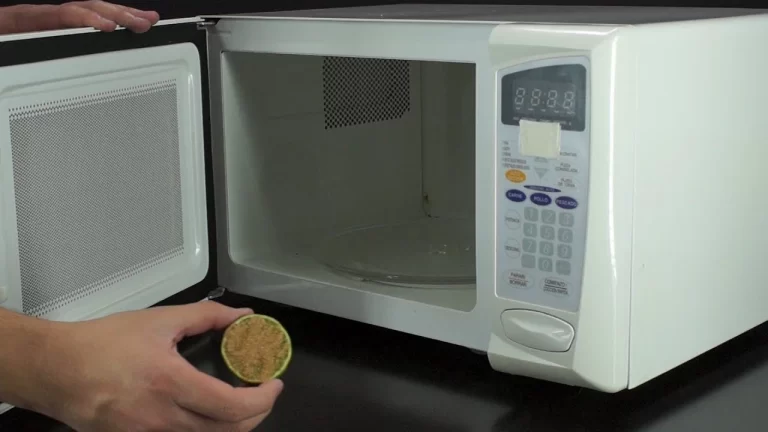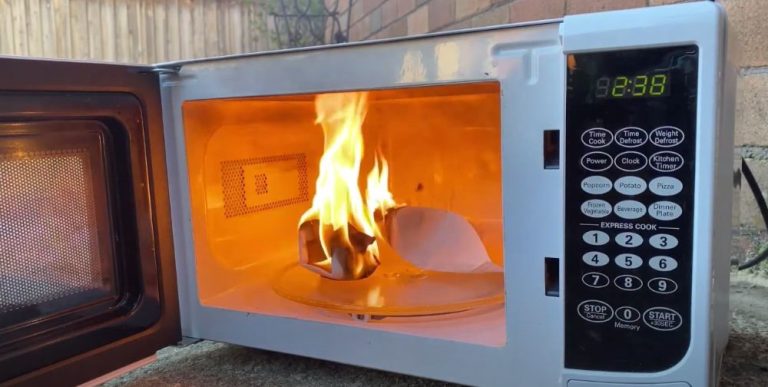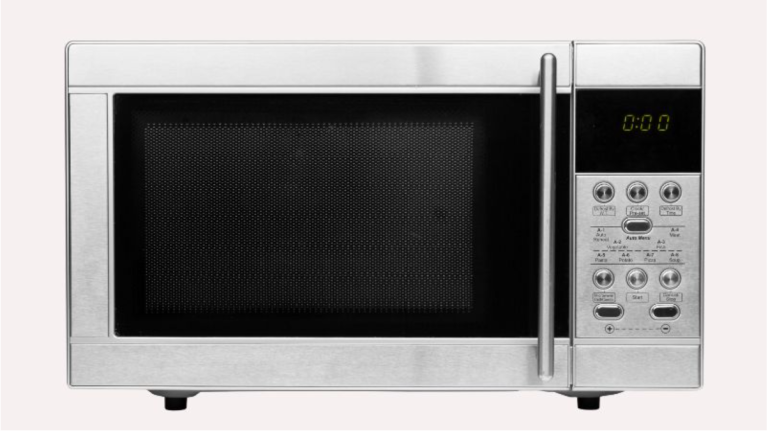There are many reasons to vent your microwave, but do you want to know how to vent a microwave on an interior wall? As a cooking lover, I can understand how bad microwave smells and smoke feel. But worry not! I’m here to help you out.
The solution is super easy, and you have two microwave venting options. Either you can install ductwork above the microwave, which will be connected to the exterior wall, and that’s how the grease and smoke go outside the kitchen.
The other solution is you need to buy a microwave that comes with a recirculating exhaust fan. This recirculating exhaust fan filters the smoke and air, then circulates the clean air back into your kitchen.
But it doesn’t remove the heat and smoke completely; that’s why the ductwork is the best. So let’s learn how to install the ductwork and vent the microwave on an interior wall.
Why Is Ductwork Essential?
No doubt, you have the option to select the new microwave that features a recirculated exhaust fan. Honestly speaking, they’re not practical for the kitchen.
Heat, smoke, and bad smell isn’t the only problem. There’s another issue that no one highlights. Recirculation means the heat; air will come again after filtration, which creates suffocation in the kitchen, making it difficult for you to cook.
This issue can be solved only when you use ductwork. It’s essential because it’s more powerful and efficient in removing smoke, steam, and cooking odors from the kitchen completely. That means no chances of suffocation in the kitchen.
While the con is, it’s time-consuming to install, and you have to pay extra because it requires a professional to do the job.
How to Install Ductwork to Vent Microwave?
Here’s the step-by-step guide to installing ductwork to vent the microwave to an interior wall. Make sure to gather all equipment before starting your work.
What Do You need?
- Ductwork.
- Duct boot.
- Aluminum tape.
- Drill.
- Measuring tape.
- Hole saw.
- Screwdriver.
Step-By-Step Guide on how to vent a Microwave on an interior wall
1. Plan the entire process
The first step is to plan the entire process of venting the microwave. Since I’m sharing the guide about the ducted vents, ensure to select the outer wall.
After selecting the wall, decide where you want to place your microwave. You can mount the microwave on the wall, besides the cabinet, the choice is yours.
However, it’s important to keep in mind that the space where you plan to install the microwave should be sufficiently large, particularly the upper area. This is because you’ll install ductwork above the microwave.
Once you’re sure about the exterior wall and the place you want to mount the microwave, gather the tools. You need various items like a drill, ductwork, pipes, aluminum tape, etc.
2. Vent installation on the exterior wall
After gathering all the necessary tools and equipment, you need to make a hole. But remember, you need the plan to cut the outer part of the wall. There are many things that you need to take care of.
One critical factor to consider is the size of the vent. Ensure the microwave exhaust vent size is correct. A hole that’s too large could allow insects or other unwanted pests to enter your home.
It’s better to mark the exterior wall with chalk to create a right-size hole. Then, you can use a power drill with the appropriate-sized hole saw attachment to cut through the wall carefully.
Again, creating a hole in an exterior wall can be a challenging task. It would be best left to a professional if you have yet to gain prior experience.
3. Duct assembly and making holes in cabinets
The third step is duct assembly. These ductwork do not come in one unit; instead, you’ll get several parts. You have to assemble all the parts and attach them to the microwave.
But before you assemble, prepare your cabinet for the microwave. If you plan to mount the microwave below a cabinet, you must create a hole in both the cabinet surface and the top.
The hole in the cabinet surface allows the duct boot to pass through. Once the duct boot has passed through both surfaces, it can be attached to the duct pipe that leads to the exterior wall vent.
Note: Always measure the size of the duct boot, and mark the cabinet before using the machine to make holes.
4. Attach the duct boot to the microwave.
Here comes the last step: attaching the duct boot to the microwave. First, mount the microwave below the cabinet. Then install a duct boot from the cabinet surface to the microwave vent hood.
Use aluminum tape on the sides of the duct boot so the air doesn’t leak from anywhere. Get the duct pipe and attach it to the duct boot and pass it through the top hole of the cabinet.
After the pipe passes the hole in the cabinet, connect it to the exterior wall vent. That’s it; lastly, for better coverage, use aluminum tape on the joint of the pipe and exterior vent.
How to vent a microwave through the roof?
You can easily vent a microwave through the roof by following the steps below.
- Make a venting hole on the roof as per the vent size.
- Create two holes; one is on the surface of the cabinet, and the other is on the top.
- Mount your microwave below the cabinet.
- Connect the ductwork with the microwave vent.
- Attach the duct pipe to the duct boot.
- Pass the pipe through the cabinet holes.
- Connect the pipe to the roof vent that you’ve made.
What are the different ways to vent a microwave?
There are three different ways to vent a microwave.
- Vent directly to the roof: In this method, you have to connect the duct pipe to the roof of your home instead of connecting it to the exterior wall.
- Recirculating method: This is quite simple and hassle-free. Your only job is to buy a microwave that has a recirculating exhaust fan that will filter the air.
- Vent to the exterior wall: It’s also a good option but needs professionalism. You have to create a vent on the exterior wall and then connect the duct pipe to this vent so the heat and air can go outside the home.
How to vent a microwave on an exterior wall?
There are two methods for venting a microwave through an exterior wall:
- Indirect method: In this method, you mount the microwave on an interior wall and connect the microwave vent to the exterior wall vent via ductwork.
- Direct method: This involves mounting the microwave directly on the exterior wall. Before mounting the microwave, you will need to create a vent hole in the wall and attach the ductwork to the microwave.
FAQs
Final Words
We’ve discussed the detailed answer of how to vent a microwave on an interior wall above. Frankly speaking, it’s not an impossible task; you only need expertise, or if you don’t have it, then help from a professional to make perfect venting holes.
In case you’ve decided to do everything yourself, then make sure to follow our guide. Be sure to plan ahead and take your time to ensure that the job is done correctly.







